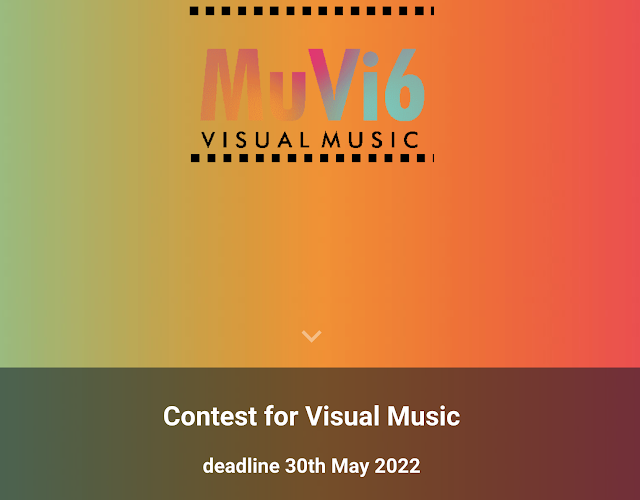MuVi6 (2022)
MuVi6 invites artists, musicians, designers and performers, also professors and university students, to submit proposals of videos to be part of a public exhibition, with performances and discussions.
Visual Music exhibition is part of the VII International Congress "Synaesthesia: Science & Art", to be held from the 26th to the 29th of October 2022, Faculty of Fine Art "Alonso Cano", University of Granada, and Convento de Capuchinos, Alcalá la Real (Jaén, Spain)
Deadline for Submissions
Latest date for submissions is 30 May 2022.
Dates of Exhibition
26th to the 29th of October 2022.
MuVi6 invites artists, musicians, designers and performers, also professors and university students, to submit proposals of videos to be part of a public exhibition, with performances and discussions.
Visual Music exhibition is part of the VII International Congress "Synaesthesia: Science & Art", to be held from the 26th to the 29th of October 2022, Faculty of Fine Art "Alonso Cano", University of Granada, and Convento de Capuchinos, Alcalá la Real (Jaén, Spain)
Deadline for Submissions
Latest date for submissions is 30 May 2022.
Dates of Exhibition
26th to the 29th of October 2022.
Where
Alcalá la Real, Jaén, Spain (Convento de Capuchinos)
Granada, Spain (University of Granada, Faculty of Fine Arts "Alonso Cano")
Topic
The topic of the exhibition is visual music and synesthesia. For “visual music”, we intend every representation to be only visual or audiovisual, suggested by the music. The correspondences between the visual and music can be the results of synesthetic perceptions (the visuals are the mental images suggested by the music); or the correspondences can be the result of studies on the analogies between the visual and musical languages (rhythms, tonality, texture, colours, etc.). The support of a narrative thread is not required.
MORE INFORMATION
For more information and details on how to submit your work visit the website:
#visualmusic, #callforworks, #MuVi6
